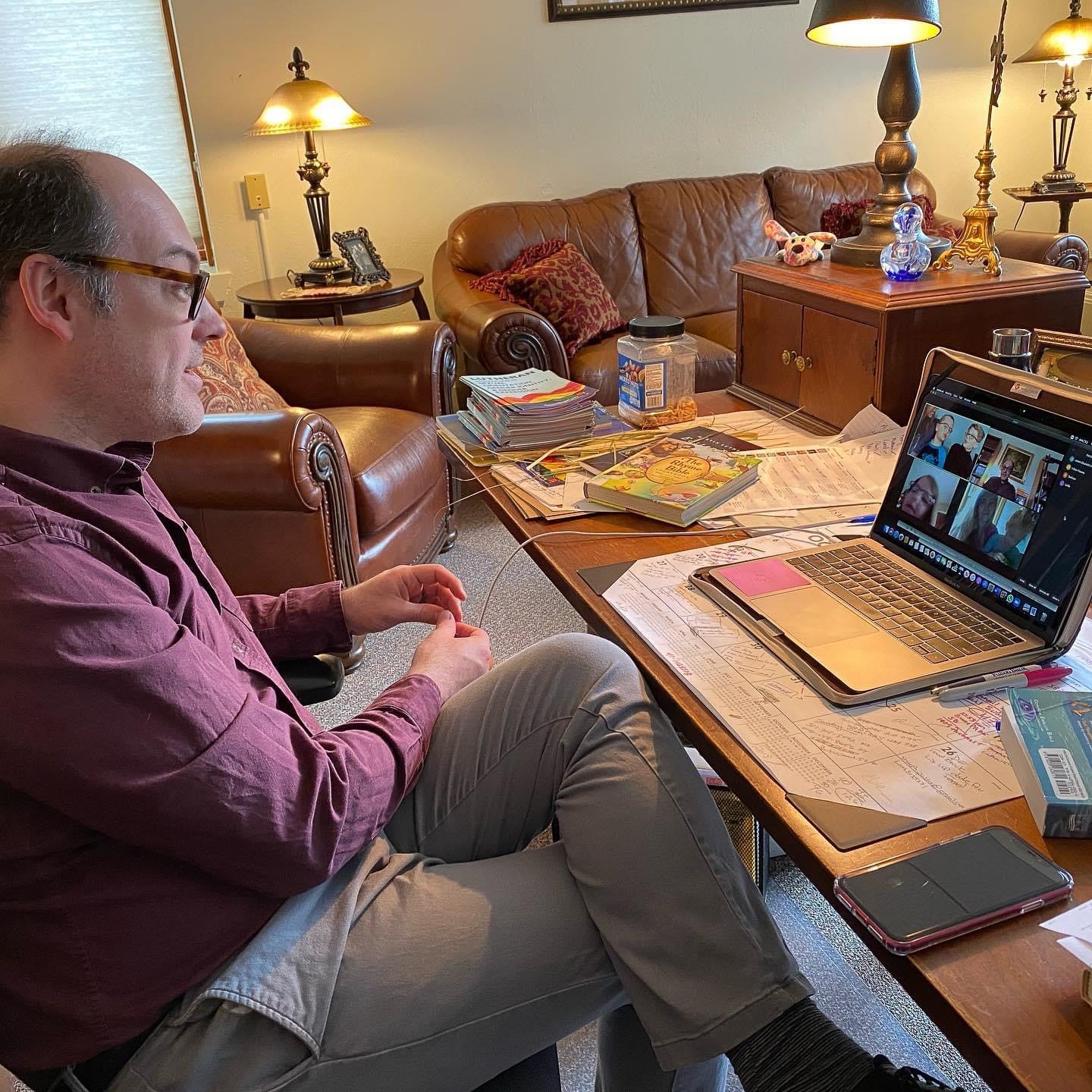SHOULD I WEAR A FACE MASK?
BY CATHY A. SPIGARELLI
republished below in full unedited for informational, educational and research
purposes:
Awkward. This is how it feels to be in public during the COVID-19 pandemic. Some faces are masked; others are not. This polarity has led the public to judgment, anger, and hostile interaction. We all want to do the right thing and stop the spread of disease, but is a face mask really protecting you and those around you? We have all wondered, “Should I wear a face mask?”
As an environmental, health, and safety manager responsible for respiratory protection, I understand that face masks can play a supportive role in protecting the wearer from airborne hazards if the proper mask is chosen under the right circumstances. I also know that face masks can be ineffective, can create new hazards, and should not be the first or only line of defense. Face masks should be relegated to those in an industrial, emergency services, or healthcare work setting where proper mask selection, training, fit testing, and mask inadequacies can be addressed. The general public, in community settings, should not be wearing face masks to lessen viral transmission, as the data and potential drawbacks do not support their use. Instead, the focus should be on the more-effective ways you can protect yourself and those around you.
Face Mask Basics
Face masks can be used as Personal Protective Equipment (PPE) to protect the wearer or used as Source Control to protect those around an infected wearer. But critical to a mask’s performance is filter efficiency and fit. Filter efficiency is the ability to capture contaminants. Design and materials of construction determine filter efficiency. A tight fit is also critical, preventing air leakage out of the mask. Both are necessary for high-level protection.
The most common masks worn are cloth face masks, surgical masks, and N-95 respirators. However, these masks are not all created equal.
A cloth face mask is loose-fitting and made from a variety of materials; it has limited filter efficiency, doesn’t adhere to any design or filter efficiency standard, and lacks a test standard that confirms performance.
The Centers for Disease Control (CDC) has recommended that the public wear cloth face masks as a form of Source Control and has encouraged the public to make their own masks. And some are wearing cloth masks mistakenly thinking that they will protect them from disease.
Homemade and commercial cloth masks are being worn by the public. The materials of construction vary greatly, which directly impacts their effectiveness. In a 2010 study funded by the National Institute for Occupational Safety and Health (NIOSH), a range of potential cloth mask fabrics (t-shirt, sweatshirt, towel, scarf, and commercial cloth mask) were tested for filter efficiency. The study found, “The use of fabric materials may provide only minimal levels of respiratory protection to a wearer against virus-size submicron aerosol particles (e.g. droplet nuclei). This is partly because fabric materials show only marginal filtration performance against virus-size particles when sealed around the edges. Face seal leakage will further decrease the respiratory protection offered by fabric materials.”
Couple the inadequate filter efficiency with the unstructured, loose fit of these masks, and it should be no surprise that studies have found cloth masks are not effective. In a 2015 study by MacIntyre, et al., they concluded, “In the interest of providing safe, low-cost options in low income countries, there is scope for research into more effectively designed cloth masks, but until such research is carried out, cloth masks should not be recommended.” Also, in a commentary entitled “Masks-For-All For CoVID-19 Not Based on Sound Data,” the authors concluded, “Our review of relevant studies indicates that cloth masks will be ineffective at preventing SARS-CoV-2 transmission, whether worn as source control or as PPE.”
Cloth face masks are not a form of res-piratory protection and should be thought of as merely symbolic, giving the appearance of doing “something.”
Surgical masks also are loose-fitting masks, ones designed to trap airborne droplets emitted from the mouth or nose of the wearer, preventing droplets from being expelled into the surrounding space. Although regulated by the FDA, surgical masks are not required to form a seal with the face, nor do they have a minimum level of performance to meet.
Surgical masks were initially designed for Source Control to decrease the spread of bacteria or virus from an infected wearer to a vulnerable patient (think open wounds). These were not designed to protect the wearer from disease, and there is much evidence that they do not.
Surgical mask efficacy varies widely. Experimental results are mixed and vary with mask type and manufacturer, experimental setting (clinical, household, lab), and type of disease assessed. So the ability of a surgical mask to function as Source Control is variable. That said, in a recent review by the Center for Infectious Disease Research and Policy, it was concluded: “These data suggest that surgical masks worn by the public will have no or very low impact on disease transmission during a pandemic.” This makes sense since, even if the coronavirus is expelled from the body in larger droplets of water that should be caught by the mask, these masks are not fitted and air takes the path of least resistance, so basically through the unsealed edges and openings of the mask.
As PPE, many studies have confirmed that surgical masks do not prevent inhalation of particles due to poor facial fit and limited filtration characteristics. The Canadian Centre for Occupational Health and Safety states that the filter material of surgical masks does not retain or filter out submicron particles and is not designed to eliminate air leakage around the edges. A 2008 study by Tara Oberg, M.S., and Lisa M. Brosseau, S.D., concluded, after testing several surgical masks, “None of these surgical masks exhibited adequate filter performance and facial fit characteristics to be considered respiratory protection devices.”
N-95 respirators have a tight-fitting design and are engineered to protect the wearer by removing 95 percent of particles, at least .3 microns and greater, from the air moving through it. They are of intricate design, are capable of high filter efficiency, and remove a wide range of particle sizes. N-95 respirators conform to the NIOSH 42 CFR 84 performance standard, and fit testing is required to ensure a protective fit.
The N-95 respirator was designed to function as PPE. A 2006 study by Anna Balazy, et al., published by the American Journal of Infection Control, concluded that N-95 respirators don’t provide complete protection against small virions. Even with a perfect fit — but with less than 100-percent efficiency and particle size-capture constraints — an N-95 respirator is not fully protective. Yet the N-95 provides better protection than a surgical or cloth mask. The N-95 respirator (without an exhalation valve) performs well for Source Control, although one study published in the Journal of Occupational and Environmental Hygiene indicated that Source Control efficacy could be improved by sealing the mask further.
Face Mask Problems and Hazards
One of the reasons that PPE is the lowest control strategy for hazard mitigation is because people are human: We make mistakes. We not only forget to wear them, we might take the mask off at lunch, but then do not put it back on when we re-enter the hazardous situation. And face masks can be hot and sweaty, and fog up eyeglasses, causing us to lower them on the face to get relief. They’re also lowered because they make verbal communication and breathing a bit harder. As soon as one does this, the mask is not working to protect you or those around you.
Even observational studies of healthcare professionals have shown that they often incorrectly put on and take off their respirators. Compliance is even more difficult for the untrained public. Training is required for effective PPE use. Face masks become ineffective when a wearer does not know how to examine a mask for flaws or damage prior to use; how to properly clean and store it; when to replace a mask; and how to properly position it on the face. An ill-fitting or damaged mask does little good.
As well, wearing a mask has the potential to create new hazards and even illness.
It has been shown that viruses can collect and hang out on the outside of a mask. This is a source of self-contamination or surface contamination, and leads to spreading the virus if you are not careful handling, removing, and disposing of the mask. Moreover, frequently touching your face to adjust an ill-fitting or uncomfortable mask increases the risk of viral exposure by transferring the virus from mask to fingers to common surfaces — or your face.
Others can then pick up the virus from the contaminated surface and, in a moment of poor hygiene, infect the mucous membranes of the nose, mouth, or eyes. This happened to a woman from Charlotte, North Carolina, even though she claimed to follow quarantining perfectly and wore a mask and gloves regularly. One trip to the pharmacy (gloved and masked) and contact with a virus-contaminated credit card reader was all it took (according to contact tracers), and she became sick with the coronavirus.
Studies point to other detrimental health effects of wearing a face mask, especially the tighter-fitting N-95 respirator, if worn for extended periods of time:
• Headaches are a frequent complaint with N-95 use and attributed to impaired breathing.
• In addition, a tight-fitting N-95 can increase viral load. If you are infected, you will constantly be rebreathing the virus and effectively increasing its concentration in the lungs and nasal passages. High viral load early on is associated with worse outcomes for the sick.
• Masks are a potential source of bacteria and viruses. “The moisture from exhalation inside the mask, when in constant contact with the 37 degrees Celsius warm human body, becomes [an] ideal place for virus and bacteria to thrive,” said Dr. Saha.
And simply covering one’s nose and mouth doesn’t stop pathogens from entering your body. According to the American Optometric Association, it is possible that the coronavirus can enter through the conjunctiva of the eye and spread through the body via blood vessels.
Dr. Joseph Fair, a prominent virologist, contracted COVID even though he stated he was using “max precautions,” indicating he was wearing a face mask and gloves while in public. He suggests the possibility that he became infected through eye contact. He states, “Even people like me that do this for a living” can make mistakes (although he does not recall making one).
So in answer to the question, “Should I wear face mask?” the answer is generally “No.” Even WHO, which has taken an alarmist position regarding COVID-19, said on April 6, 2020, “The wide use of masks by healthy people in the community setting is not supported by current evidence and carries uncertainties and critical risk.” This thinking is supported in a commentary by Dr. Russell Blaylock, a nationally recognized, board-certified neurosurgeon, health practitioner, author, and lecturer, who stated in a recent article for the online site Technocracy News & Trends, “It is evident from this review that there is insufficient evidence that wearing a mask of any kind can have a significant impact in preventing the spread of this virus.” He very strongly warns that the healthy should not wear face masks.
For the general population, wearing a face mask is a distractor, taking focus away from the more effective mitigation strategies an individual should take. Yes, an N-95 respiratory and surgical mask might have some utility, but due to the problems and risks of their use by the untrained and unsupervised, these should be reserved for work settings where there is oversight. In the case of a cloth mask or covering, the data do not support their use. Add the issues of wearing one (difficulty breathing, discomfort, communication hurdles, the potential to cross contaminate, and the increased risk of infection), and the answer becomes clear, as said Dr. Anthony Fauci, who has been elevated by the mainstream media to near god-like status for his views on the pandemic, on a 60 Minutes Overtime interview: “In America, people should not be walking around with a mask!” (March 8, 2020).
Instead of reliance on a face mask for protection, impeccable personal hygiene, isolation of the sick and high risk, social distancing, and decontamination of common surfaces should be emphasized.
Immaculate personal hygiene includes often and carefully washing your hands, using hand sanitizer when hand washing is not possible, and keeping your hands away your face. These sound like a “duh” to most people, but they are critical to disease-transmission prevention.
Stay healthy.

 Rev. Jason Churchill of St. Stephen’s Lutheran Churh interacts online with Bible school students. (Courtesy of Jason Churchill)
Rev. Jason Churchill of St. Stephen’s Lutheran Churh interacts online with Bible school students. (Courtesy of Jason Churchill) Rabbi Michael Beals livestreams daily services to the empty Congregation Beth Shalom sanctuary in Wilmington. (Courtesy of Rabbi Michael Beals)
Rabbi Michael Beals livestreams daily services to the empty Congregation Beth Shalom sanctuary in Wilmington. (Courtesy of Rabbi Michael Beals)



















